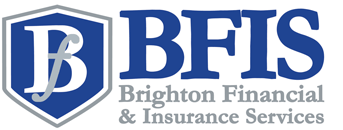Indexed Universal Life Insurance in California
9:00am - 6:00pm Mon-Fri
Will Reply in 15min*
Index
Understanding Indexed Universal Life Insurance
Benefits of Indexed Universal Life Insurance in California
Risks and Considerations of Indexed Universal Life Insurance
Choosing the Right Indexed Universal Life Insurance Policy
Frequently Asked Questions About Indexed Universal Life Insurance
Indexed Universal Life Insurance (IUL) is a popular life insurance option in California that offers a combination of a death benefit and a savings component. This type of policy provides policyholders with the opportunity to earn interest on their premiums, although returns are tied to a specific stock market index. Understanding the key features of IUL and how it works can help individuals make an informed decision about whether it is the right insurance product for them.
Understanding Indexed Universal Life Insurance
Indexed Universal Life Insurance is a type of permanent life insurance that provides coverage throughout the policyholder's lifetime. Unlike term life insurance, which offers coverage for a specific period, IUL offers lifelong protection as long as the premiums are paid. This means that individuals can have peace of mind, knowing that their loved ones will be financially protected even after they pass away.
But what sets Indexed Universal Life Insurance apart from other types of life insurance is its cash value component. This component allows policyholders to accumulate savings over time, which can serve as a potential source of supplemental income. The cash value grows tax-deferred, meaning that policyholders do not have to pay taxes on the growth until they withdraw the funds.
Key Features of Indexed Universal Life Insurance
There are several key features of Indexed Universal Life Insurance that make it an attractive option for individuals seeking both insurance and a savings component. Firstly, the death benefit is paid to the policy beneficiary tax-free upon the policyholder's passing. This provides financial security to loved ones, ensuring that they will have the necessary funds to cover expenses such as funeral costs, outstanding debts, or ongoing living expenses.
Secondly, policyholders have the flexibility to adjust their premiums and death benefit amounts as their needs change over time. This means that if their financial situation improves, they can increase their premium payments to accumulate more savings. On the other hand, if they face financial difficulties, they can decrease their premium payments while still maintaining coverage.
Lastly, the cash value component of IUL policies has the potential to accumulate interest based on market performance. This means that policyholders can benefit from the growth of the stock market without directly investing in it. The interest credited to the cash value is tied to the performance of a specific stock market index, such as the S&P 500. If the index performs well, the cash value will grow accordingly, providing policyholders with the opportunity to build a substantial savings nest egg.
How Indexed Universal Life Insurance Works
Indexed Universal Life Insurance works by tying the policy's cash value growth to the performance of a specific stock market index. This is typically done through the use of an equity index crediting strategy, where a portion of the premium payment is allocated to a fixed account to cover insurance costs, and the remaining portion is allocated to an indexed account.
The interest credited to the indexed account is based on the performance of the chosen index, up to a certain cap rate. This means that if the index performs exceptionally well, the cash value will grow at a higher rate. However, there is a cap on the interest rate, which ensures that policyholders do not face excessive risk or rely too heavily on market performance.
It's important to note that IUL policies also offer a downside protection feature, which ensures that the cash value does not decrease based on poor market performance. This downside protection feature provides policyholders with peace of mind, knowing that their cash value will not be negatively impacted by market downturns. This feature sets IUL apart from other types of investments, as it offers a level of security and stability.
In conclusion, Indexed Universal Life Insurance is a comprehensive financial tool that combines the benefits of life insurance coverage with the potential for savings growth. With its flexibility, tax advantages, and downside protection, IUL can be a valuable addition to an individual's financial portfolio, providing both protection and the opportunity for wealth accumulation.

Benefits of Indexed Universal Life Insurance in California
Indexed Universal Life Insurance (IUL) offers a range of benefits for policyholders in California, ensuring both financial security and flexibility.
Financial Security and Flexibility
One major benefit of IUL is the financial security it provides to policyholders and their families. The death benefit paid out to beneficiaries can help cover funeral expenses and provide financial support when it is needed most. This can alleviate the burden on loved ones during a difficult time and ensure that they are taken care of financially.
Additionally, IUL policies offer flexibility in premium payments, allowing policyholders the option to increase or decrease premiums over time based on their financial situation. This can be particularly beneficial for individuals who may experience changes in their income or financial obligations. The ability to adjust premium payments provides a level of adaptability that traditional life insurance policies may not offer.
Potential for Cash Value Accumulation
Another benefit of IUL is the potential for cash value accumulation. The cash value component of the policy grows over time, based on the performance of the underlying index or indices. This means that policyholders have the opportunity to build up a substantial cash value that can be accessed in the future.
Policyholders can access these funds through withdrawals or policy loans. This flexibility allows individuals to utilize the cash value for various purposes, such as supplementing retirement income, funding education expenses, or covering unexpected financial needs. Having access to these funds can provide a sense of financial security and peace of mind, knowing that there is a safety net in place.
Furthermore, the potential for cash value accumulation can be particularly appealing in California, where the cost of living tends to be higher compared to other states. The ability to build up a cash value over time can help individuals navigate the financial demands of living in a state with a higher cost of living.
In conclusion, Indexed Universal Life Insurance in California offers not only financial security and flexibility but also the potential for cash value accumulation. These benefits can provide individuals and their families with a sense of peace of mind, knowing that they are protected and have the ability to access funds when needed. Whether it's covering funeral expenses, adapting to changes in financial circumstances, or planning for the future, IUL can be a valuable tool in achieving financial goals and securing a stable future.
Risks and Considerations of Indexed Universal Life Insurance
While Indexed Universal Life Insurance can offer benefits, it is crucial to consider the potential risks and drawbacks, particularly in relation to market risks and insurance costs.
Indexed Universal Life Insurance (IUL) is a type of life insurance policy that combines a death benefit with an investment component. It allows policyholders to allocate a portion of their premium payments to a cash value account, which is then invested in various market indexes, such as the S&P 500. The cash value growth of the policy is tied to the performance of these indexes.
However, before deciding to purchase an IUL policy, it is important to thoroughly understand the risks involved.
Market Risks and Insurance Costs
One of the main risks associated with Indexed Universal Life Insurance is market volatility. Since the policy's cash value growth is tied to market performance, poor market conditions can result in lower returns or even negative growth. It's important for policyholders to carefully consider their risk tolerance and ensure they have a diversified investment portfolio to mitigate potential market risks.
Furthermore, the performance of the chosen indexes can vary greatly, and it is essential to understand how the policy's cash value is calculated based on these indexes. Policyholders should research and analyze historical market trends to gain a better understanding of the potential risks involved.
In addition to market risks, policyholders need to be aware of the insurance costs associated with IUL policies. These costs cover items such as administrative fees, mortality charges, and premium loads. It's essential to review the policy's illustrations and understand the impact of these costs on the policy's cash value growth.
Policyholders should carefully evaluate the projected growth of the cash value and compare it to the associated insurance costs. This analysis will help determine if the potential benefits outweigh the expenses.
Understanding the Surrender Period
Indexed Universal Life Insurance policies typically have a surrender period, which is a specified period during which policyholders may face penalties or fees if they choose to cancel or surrender the policy. The surrender period can range from several years to over a decade, depending on the policy's terms and conditions.
It's important to carefully review the surrender period provisions and understand the implications before committing to an IUL policy, as early termination may result in financial loss. Policyholders should consider their long-term financial goals and assess whether they can commit to the policy for the duration of the surrender period.
During the surrender period, policyholders may also have limited access to the cash value of the policy. This restriction can impact their ability to withdraw funds or take out loans against the policy. It's crucial to evaluate the liquidity needs and potential future financial obligations before entering into an IUL policy.
Additionally, policyholders should be aware that surrendering the policy before the end of the surrender period may result in the loss of any accumulated cash value and potentially incur taxes and penalties.
In conclusion, while Indexed Universal Life Insurance can provide certain advantages, it is essential to thoroughly evaluate the potential risks and drawbacks. Policyholders should carefully consider market risks, insurance costs, and the surrender period before making a decision. Seeking advice from a financial professional can help navigate the complexities of IUL policies and ensure that the chosen policy aligns with the individual's financial goals and risk tolerance.
Choosing the Right Indexed Universal Life Insurance Policy
When considering an Indexed Universal Life Insurance policy, there are several factors that individuals should take into account to make an informed decision.
Factors to Consider When Choosing a Policy
One important factor to consider is the financial strength and reputation of the insurance provider. It's essential to select a reputable company with a strong track record of stability and reliability. Additionally, individuals should carefully review the policy's features, such as the death benefit options, premium flexibility, and potential for cash value accumulation. Comparing multiple policies and seeking professional advice can help individuals select the policy that aligns with their specific needs and financial goals.
Tips for Comparing Insurance Providers
When comparing insurance providers, it is crucial to look beyond just the policy's face value and premium. Consider factors such as customer service reputation, claims handling process, and policyholder satisfaction rates. Reading reviews and seeking recommendations can provide valuable insights into the overall customer experience with different insurance providers.

Frequently Asked Questions About Indexed Universal Life Insurance
Indexed Universal Life Insurance can be a complex topic, and it's natural for individuals to have questions. Here are answers to some common questions:
Common Misconceptions About Indexed Universal Life Insurance
One common misconception is that IUL policies are guaranteed to deliver high returns. However, it's important to remember that the policy's cash value growth is tied to market performance and subject to potential volatility. It's essential to have realistic expectations and consider IUL as part of a comprehensive financial plan.
What to Do if Your Policy Isn't Meeting Your Needs
If you find that your Indexed Universal Life Insurance policy isn't meeting your needs or expectations, there may be options available to make adjustments. Contacting your insurance company or agent is the first step to discuss potential changes, such as adjusting premium payments, death benefit amounts, or exploring different investment options. It's important to work with a trusted professional to evaluate your options and make informed decisions.
By understanding the key features, benefits, risks, and considerations of Indexed Universal Life Insurance in California, individuals can make informed decisions when choosing the right policy. It's important to carefully review policies, compare insurance providers, and seek professional advice when necessary to ensure that the policy aligns with specific financial goals, needs, and risk tolerance. Regular review and adjustments can help policyholders maximize the benefits of their Indexed Universal Life Insurance policies and achieve financial security and flexibility.
Request A Indexed Universal Life Insurance Quote
Get Started Today!
We'll Reply in 15min or less*
Indexed Universal Life Insurance
*Response time varies based on hours of operation



